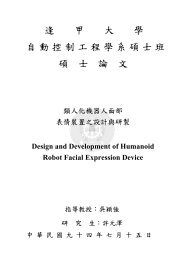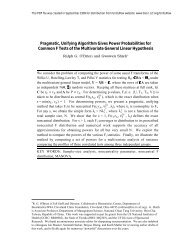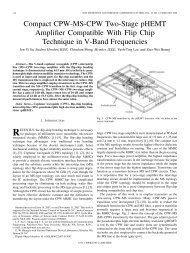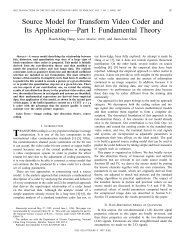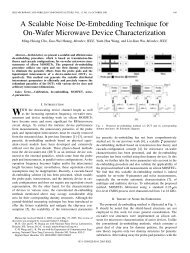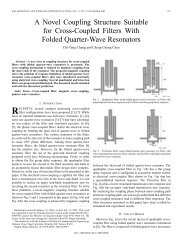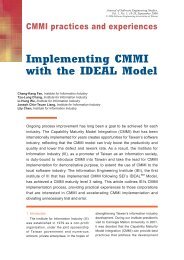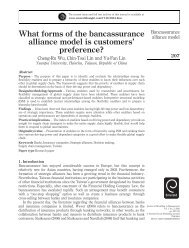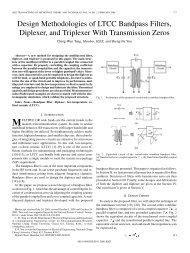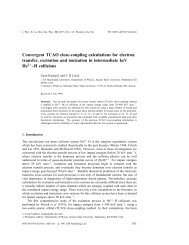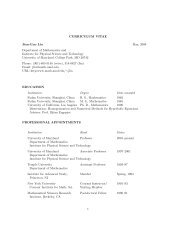A Probabilistic Approach to Geometric Hashing using Line Features
A Probabilistic Approach to Geometric Hashing using Line Features
A Probabilistic Approach to Geometric Hashing using Line Features
Create successful ePaper yourself
Turn your PDF publications into a flip-book with our unique Google optimized e-Paper software.
CHAPTER 3. NOISE IN THE HOUGH TRANSFORM 25<br />
3.2 Various Hough Transform Improvements<br />
Since the above straightforward implementation of the Hough transform needs improvement<br />
in highly degraded environments ë22ë, we have investigated the fac<strong>to</strong>rs aæecting the<br />
performance of the technique and implemented and experimented on a series of variations<br />
of the Hough transform.<br />
Fac<strong>to</strong>rs that adversely aæect the performance èreliability and accuracyè of the Hough<br />
transform include:<br />
æ Short lines inherently result in low peaks in Hough space Hèç; rè, which prevents the<br />
detection of short lines relative <strong>to</strong> long lines.<br />
æ When r = x cos ç + y sin ç is rounded <strong>to</strong> pick a particular bucket in Hèç; rè for a<br />
speciæc ç, fractional r information is lost and all subsequent computations are done<br />
on the rounded r values.<br />
æ ç is also sampled. If a line has an orientation ç 0 , not exactly equal <strong>to</strong> any sampled<br />
ç, the points on the line, when mapped <strong>to</strong> Hough space, will not have identical r<br />
values. Instead, their r values will spread out near the real r value.<br />
æ Using the coordinate èç; rè of the peak in Hough space as the line parameter limits<br />
the precision of the parameters detected, since Hough space is quantized.<br />
To strengthen the low peaks in Hough space which result from short lines present in<br />
a source image ècompared <strong>to</strong> the inherently high peaks which result from long linesè, we<br />
apply background subtraction by removing the contribution made <strong>to</strong> Hough space by edgels<br />
along a long line after this long line has been detected. This method is attributed <strong>to</strong> Risse<br />
ë48ë. To implement the idea, a global maximum in Hough space, say bucket èç; rè, is<br />
located; then its corresponding line in the image is identiæed and all accumula<strong>to</strong>r buckets<br />
which were incremented during processing edgels lying along this line are decremented.<br />
This algorithm diæers from the algorithm described in the previous section in that instead<br />
of detecting local maxima in the accumula<strong>to</strong>r array as candidate lines in the image, it<br />
detects lines one after one iteratively as follows:<br />
while still more lines <strong>to</strong> be detected do<br />
è^ç; ^rè := globalMaxèaccumula<strong>to</strong>r Aè;



